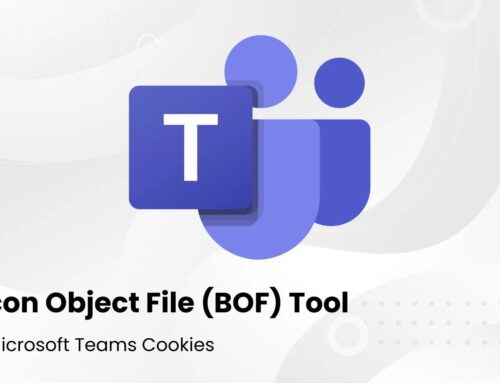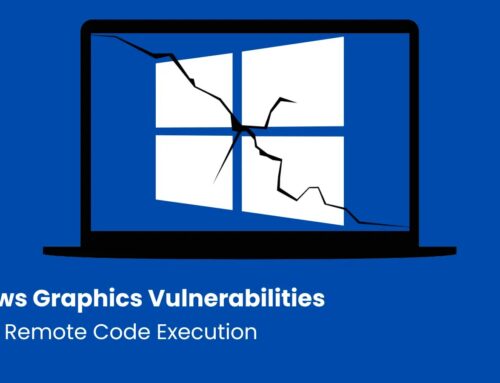
PoC Exploit Released for CrushFTP 0-day Vulnerability (CVE-2025-54309)
A critical new threat has emerged in the realm of secure file transfer: a weaponized proof-of-concept (PoC) exploit has been publicly released for CVE-2025-54309, a severe zero-day authentication bypass vulnerability impacting CrushFTP servers. This development significantly elevates the risk profile for organizations utilizing CrushFTP, as the public availability of exploit code drastically lowers the barrier for malicious actors to compromise vulnerable systems.
The ability to bypass authentication mechanisms is always a top-tier security concern. When such a flaw affects a system responsible for sensitive file transfers, the implications are profound, ranging from data exfiltration and intellectual property theft to complete system compromise and ransomware deployment. Security teams must act with urgency to understand this vulnerability and implement immediate remediation.
Understanding CVE-2025-54309: The CrushFTP Authentication Bypass
CVE-2025-54309 specifically targets CrushFTP file transfer servers. Its severity stems from its nature as an authentication bypass vulnerability, meaning it allows unauthorized access to the system. Crucially, this is not a simple credential brute-force attack; it circumvents the very process designed to verify user identity.
The core of the vulnerability lies in a race condition within CrushFTP’s AS2 validation processing. A race condition occurs when the outcome of an operation depends on the sequence or timing of other uncontrollable events. In this case, attackers can exploit this timing window to gain administrative privileges without proper authentication. This effectively grants them full control over the CrushFTP server, including access to all files and configurations.
The Impact of a Public PoC Exploit
The public release of a weaponized PoC exploit transforms CVE-2025-54309 from a theoretical threat into an immediate and tangible danger. Previously, exploiting this vulnerability would have required significant technical expertise to discover and develop the exploit code. Now, this barrier has been removed, making it accessible to a much wider range of attackers, including those with limited hacking skills.
Key implications of this public release include:
- Increased Attack Surface: All internet-facing CrushFTP servers that remain unpatched are now exposed to a high risk of compromise.
- Automated Attacks: The PoC can be easily integrated into automated scanning and exploitation tools, leading to widespread attacks targeting vulnerable instances.
- Ransomware Campaigns: Compromised file transfer servers are prime targets for ransomware operators looking for high-value data to encrypt and extort.
- Data Breach Risk: Administrative access allows attackers to exfiltrate sensitive data managed by CrushFTP, leading to significant data breaches.
Key Takeaways for Security Professionals
- A race-condition exploit enables attackers to bypass CrushFTP authentication mechanisms entirely.
- A public PoC exploit is available on GitHub, significantly
increasing the immediacy and severity of the threat posed by CVE-2025-54309. - This vulnerability allows remote attackers to gain administrative privileges on vulnerable CrushFTP servers.
- The flaw specifically leverages a timing issue within AS2 validation, allowing authentication to be circumvented.
Remediation Actions and Mitigation Strategies
Given the critical nature of and the existence of a public PoC, immediate action is paramount. CrushFTP administrators and security teams must prioritize the following:
- Patch Immediately: The most crucial step is to apply any available patches or security updates released by CrushFTP that address . Regularly check the official CrushFTP security advisories and release notes for patch availability.
- Network Segmentation: Isolate CrushFTP servers from other critical internal systems. Implement strict firewall rules to limit inbound and outbound connections to only what is absolutely necessary for server operation.
- VPN/IP Whitelisting: Restrict administrative access to CrushFTP to trusted IP addresses or require access through a corporate VPN.
- Monitor Logs: Implement robust logging and diligently monitor CrushFTP access logs for any unusual activity,
failed login attempts, or unauthorized configuration changes. Look for activity from unknown IPs. - Disable Unused Features: If the AS2 validation feature is not actively used, consider disabling it or reconfiguring it to mitigate the potential for race condition exploitation, if CrushFTP offers such controls.
- Regular Backups: Maintain frequent, secure, and offline backups of all critical data and configurations on your CrushFTP server. This is vital for recovery in the event of a successful compromise.
- Incident Response Plan: Ensure your organization has a well-practiced incident response plan in place for handling data breaches and system compromises.
Relevant Tools for Detection and Mitigation
While direct patching is the primary solution, certain tools can assist in identifying vulnerable instances or monitoring for suspicious activity:
| Tool Name | Purpose | Link |
|---|---|---|
| Vulnerability Scanners (e.g., Nessus, Qualys, OpenVAS) | Identify known vulnerabilities, including potentially CVE-2025-54309 if signatures are updated. | Nessus, Qualys VMDR, OpenVAS |
| Network Intrusion Detection/Prevention Systems (NIDS/NIPS) | Monitor network traffic for suspicious patterns or known exploit signatures related to CrushFTP. | Snort, Suricata |
| Security Information and Event Management (SIEM) Systems | Aggregate and analyze logs from CrushFTP and other systems for anomalous activity, facilitate threat detection. | Splunk, Elastic SIEM |
| Endpoint Detection and Response (EDR) Solutions | Monitor the CrushFTP server itself for unauthorized process execution or file modifications post-exploit. | CrowdStrike, SentinelOne |
Conclusion
The public release of a weaponized PoC for , the CrushFTP zero-day authentication bypass, presents a significant and immediate threat to organizations relying on these servers for file transfers. This vulnerability, stemming from a race condition in AS2 validation, allows remote attackers to bypass authentication and achieve administrative access.
Cybersecurity teams must prioritize immediate patching, stringent network segmentation, vigilant log monitoring, and robust incident response planning to mitigate the severe risks posed by this critical vulnerability. Failure to address this flaw promptly could lead to significant data breaches, system compromises, and operational disruption.





